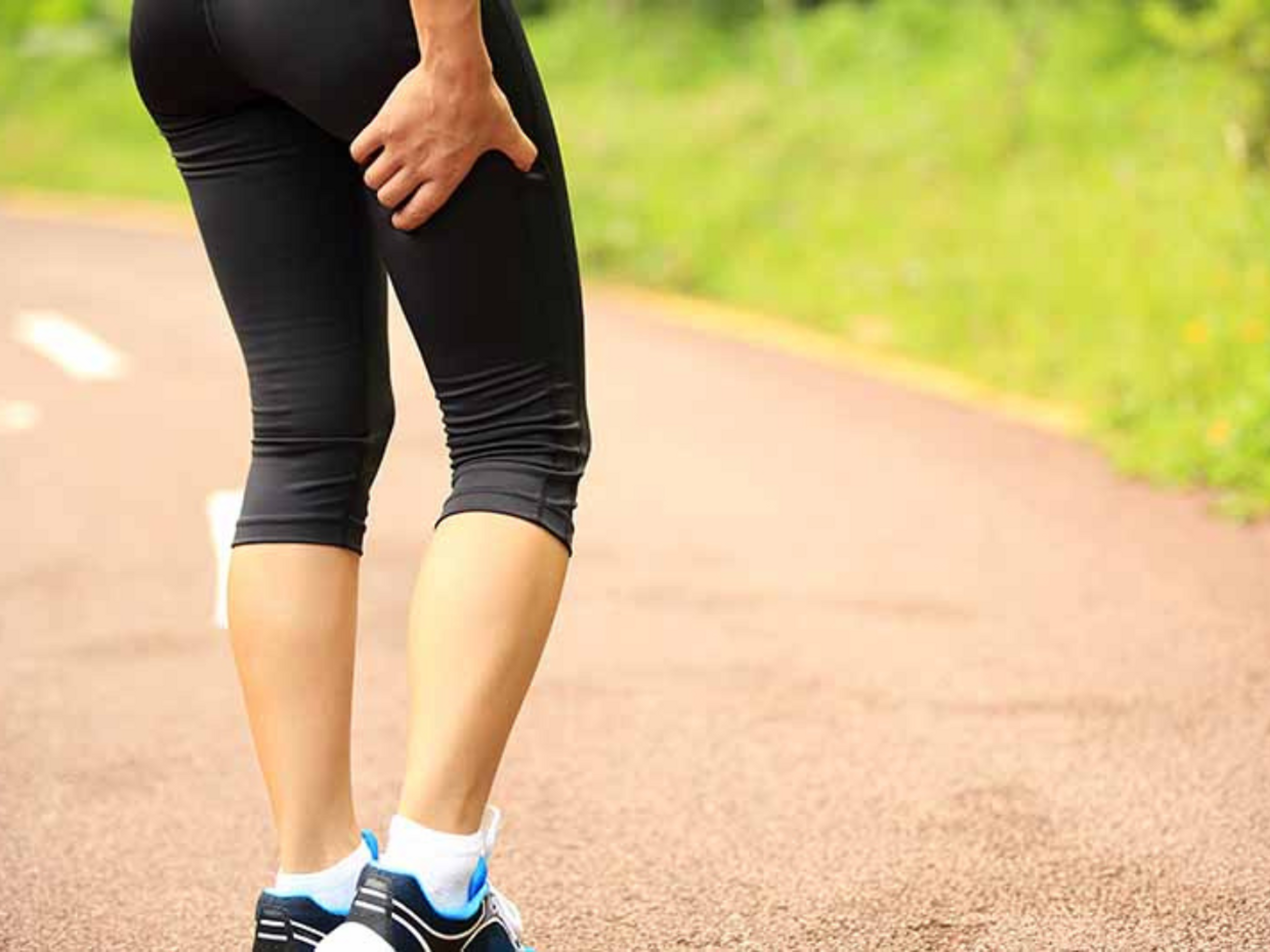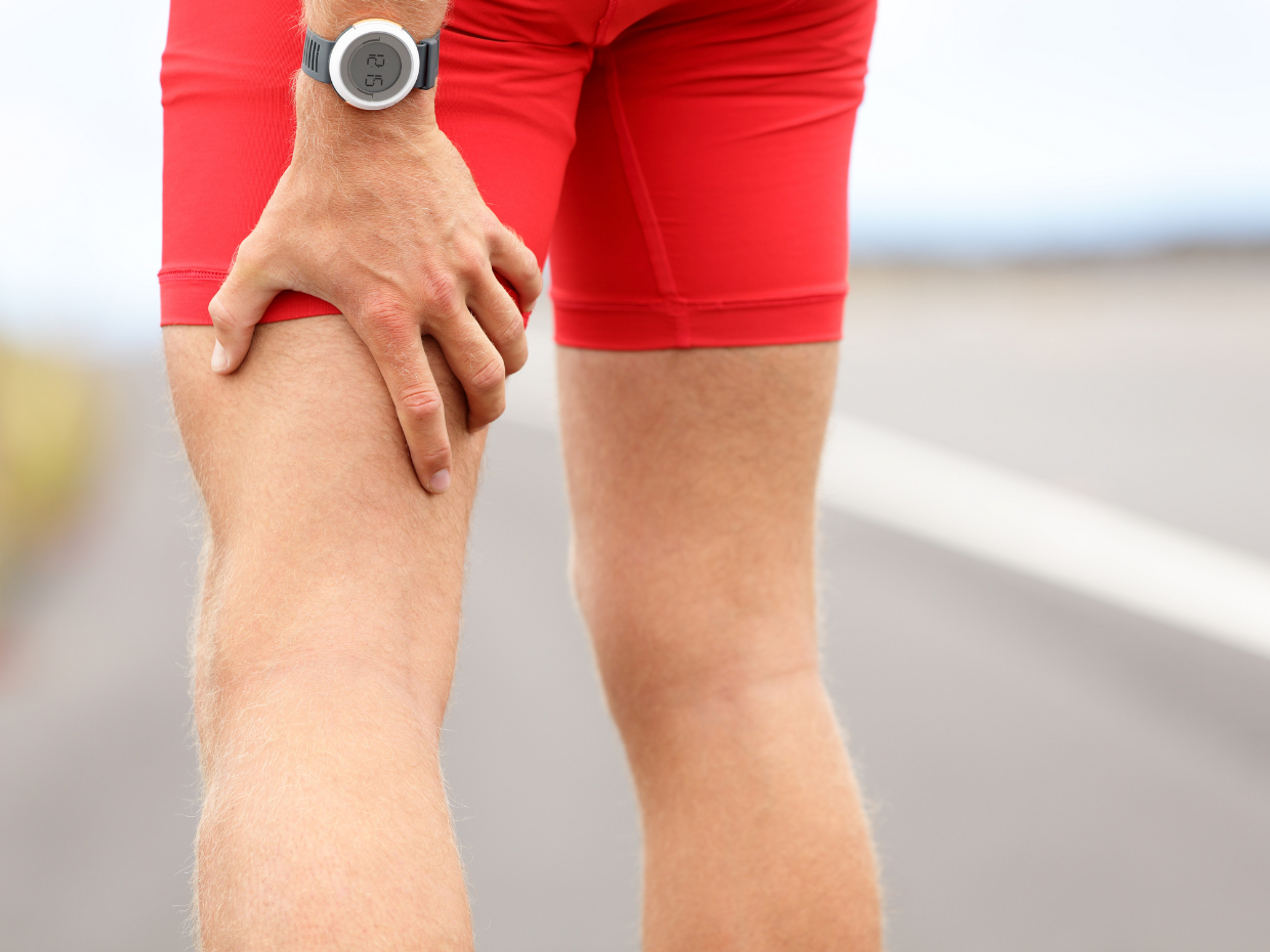Recognizing and treating hamstring strains: Symptoms, recovery, and more
Let's start by looking at the anatomy of the hamstrings and what happens when you strain them.
Hamstring anatomy
Your hamstrings are a group of 3 muscles that run down the back of your thigh. They all originate from tendons attached to your sit-bone (ischial tuberosity).
The Semimembranosus and Semitendinosus run along the inner part (medial) of the back of your thigh and attach around the inner part of the knee onto the tibia.
The Biceps Femoris has two "heads." The long head originates from the sit bone, while the short head originates from the femur. The two heads combine to form one muscle, and its tendon attaches to the outside of your knee onto the fibula.
Zoomed in view
At closer inspection, the hamstring muscles consist mainly of 3 types of tissue:
- Muscle cells
- Fascia
- Tendons
Their muscle bellies are made up mostly of muscle cells. These muscle cells are grouped in bundles held together by a thin layer of fascia (that white, sinewy stuff in meat). A muscle consists of lots of muscle cell bundles that are grouped together. A layer of fascia also surrounds the muscle itself.
Muscles can't attach directly to bones. The muscle belly attaches to a tendon, which then attaches to the bones. The attachment between the tendon and muscle belly isn't a clean-cut line; the two gradually merge, making it a strong attachment.
Nerves, arteries, and veins run in and around the muscles.
What's the difference between a pulled hamstring, a hamstring strain, and a hamstring tear?
There is no difference. These are just different names for the same injury, and all of them involve some tearing of the muscle tissue.
In practice, people often refer to more minor hamstring tears as a pulled or strained hamstring, while they tend to only talk about a torn hamstring when they feel that it is a more severe injury.
We will use these terms interchangeably.
What happens when you pull or strain a hamstring?
When you pull a hamstring, you tear some of the muscle fibers. Depending on where in the muscle the injury occurs, you may also injure the fascia or tendon.
Hamstring strains that happen closer to your sit-bone or the knee (upper and lower quarter of the thigh) are more likely to involve the tendons. If your injury is in the middle of your thigh, you've likely mainly injured the muscle tissue.
Why is this important? Injuries that involve the tendons can take several months to heal; Ones that only affect the muscle fibers heal much more quickly.
It is pretty common also to tear some blood vessels, which is why you may have a bruise.
How do I know if I've strained a hamstring?
Other conditions (like sciatica, back pain, hamstring tendinopathy, etc.) can cause pain in the same area. That's why you shouldn't just assume that the pain you feel in the back of your thigh is a pulled hamstring.
The infographic below can help you figure it out. It lists the typical signs and symptoms of a pulled hamstring.
What does a pulled hamstring feel like?
Do you need a scan to diagnose a hamstring strain?
No, you don't need a scan. In most cases, a physical therapist or doctor can diagnose a hamstring strain simply by:
- Going through the history of how your injury happened
- Where your symptoms are
- Getting you to do some simple test movements to see how sensitive the hamstrings are when stretched or contracted
Hamstring strain recovery times
The typical recovery times for a pulled hamstring vary according to the severity of the injury and what part of the hamstring you injured.
- Minor hamstring strains recover in about 4 weeks.
- More significant hamstring tears can take 8 to 12 weeks.
- Suppose you've also injured your hamstring tendon when you pulled your hamstring. In that case, your recovery time may take 3 months or longer.
How a strained hamstring heals
The treatments you apply or rehab exercises you do must be at the right level for the stage of healing your hamstring is in. Otherwise, you can make your injury worse.
Have a look at the hamstring strain rehab plan in the Exakt Health App for an example of how this works – it's designed to help you monitor your hamstrings' recovery and progress your exercises at the right time and with the right intensity.
How to treat a hamstring strain
You don't need any fancy treatments for a hamstring strain to heal.
The body is extremely good at healing itself if you provide it with what it needs when it needs it.
The research shows that the best treatment for hamstring strains is the right combination of rest and exercise, and this combination varies depending on what part of the healing process your injury is in.
Other treatments like ice, massage, and taping may help reduce pain, but they do little to speed up the healing process.
Let's look at all the available treatments and when they might be helpful.
1. Rest
Your injured hamstring requires a period of rest to allow the injury to settle and healing to start. Doing only very gentle movement for the first 48 hours after injury is usually best.
However, prolonged rest is also not useful as it decreases your circulation and makes you lose more strength. You'll likely also feel stiffer and more uncomfortable if you try to keep your leg still.
Relative rest promotes healing
2. Rehab exercises
Rest is brilliant at calming pain down. But just like you can't grow big muscles if you lie on the couch all day, your hamstrings also can't grow strong if you don't exercise them.
Rehab exercises help restore your injured hamstrings' strength and flexibility.
A comprehensive rehab plan should include:
The exercises should start with low loads and slowly increase intensity until your hamstrings have regained their full strength.
The Exakt Health app makes it easy to pitch your exercise level correctly. It automatically sets your training intensity to suit your hamstrings' current strength and adjusts your program based on your feedback after every workout.
3. Ice
Ice can be helpful immediately after injury as it can help limit internal bleeding and swelling. You can read more about how to apply ice safely in our article about the PRICE method.
4. Heat
Avoid heat during the first 7 days of injury. Applying heat to an area increases the blood flow, which can increase swelling and worsen a fresh hamstring strain.
5. Anti-inflammatory medication (NSAIDs)
It is best to avoid using anti-inflammatory medication (like ibuprofen) when you have a hamstring strain. Studies have shown that it may interfere with your healing process.
Speak to your GP about alternative medications if you need something for pain relief.
6. Taping
Kinesiology taping may help reduce your pain, and there is some evidence that it may help resolve the bruise from a hamstring strain more quickly.
7. Massage
Avoid massage for the first 7 days of injury. The injured area is usually still quite fragile during that period, and hard mechanical pressure can worsen your injury. The same goes for foam rolling.
After that, a gentle massage may provide some pain relief. Strong massage should be reserved for the final stages of healing when the muscle is more resilient.
8. Therapeutic ultrasound
Physical therapists often use ultrasound as part of the treatment for muscle tears. The research reports contradictory results, and whether ultrasound improves healing is unclear.
9. Low level laser therapy (LLLT)
There is evidence that low level laser therapy can help promote muscle repair.
In conclusion
Remember, each hamstring injury is unique, and so is the healing process.
Whether it's a mild pull or a more severe tear, the key to recovery lies in balancing rest and rehabilitation exercises, seeking professional advice when necessary, and being patient with your body's natural healing process.
With the right approach, you can overcome a hamstring strain and return to your daily activities or sporting endeavors with strength and resilience.
The Exakt Health app simplifies recovery by providing clear exercise guidance, 24-hour pain response testing, and helpful tips to enhance your rehab results.



